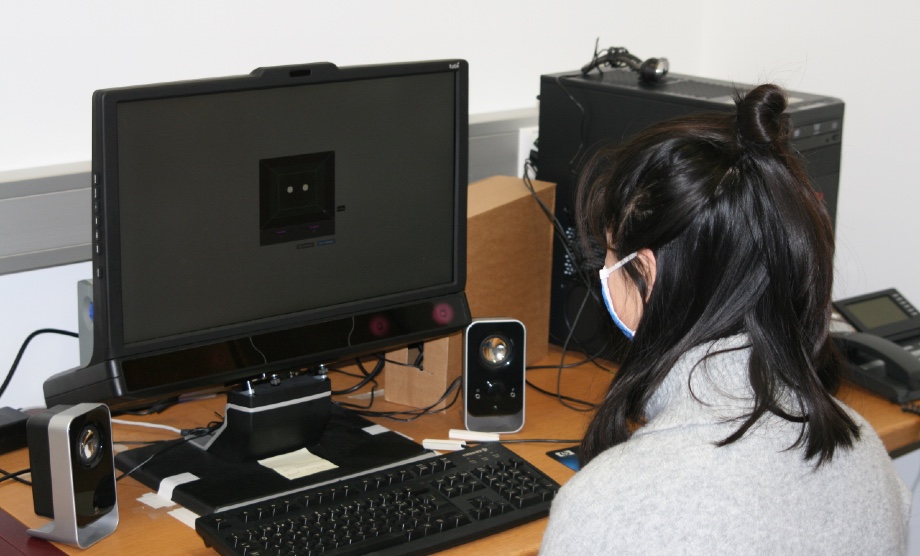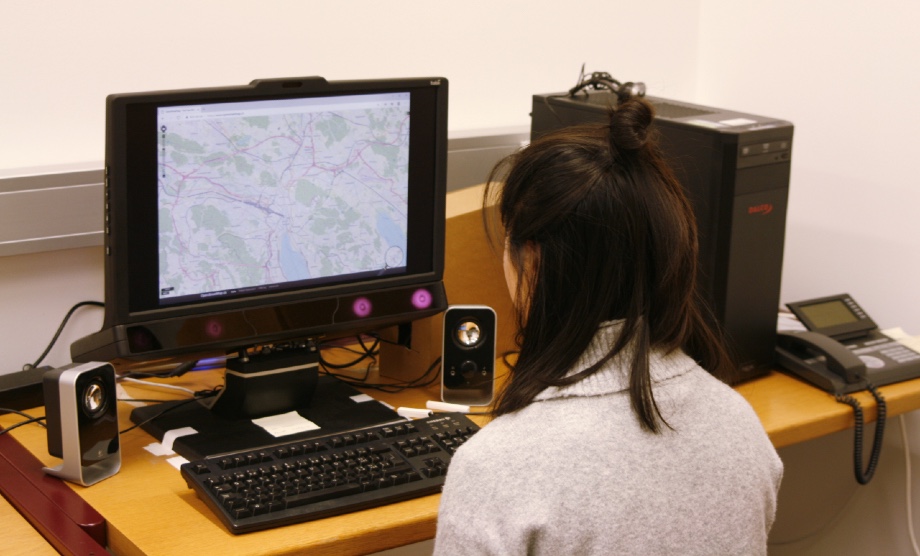Navigation auf uzh.ch
Navigation auf uzh.ch
Eyetracking is a method for unobtrusively record people’s gazes. A such it offers insights into how people scan and perceive displays, how they distribute their visual attention, and what visual search strategies they use for information processing. This allows to evaluate designs, study gaze behaviour, and better understand visual cognition processes.
Images below show the eye movement lab belonging to the GIVA (Geographic Information Visualization and Analysis) unit, located at the University of Zurich>'s Irchel campus, in the Geography department (room Y25-L9, tel: +41 44 635 52 80). The lab has been functional since Fall 2007.
Images below are of PhD student Bingjie Cheng.

The technical setup of the lab consists of an eye tracking device and a workstation with the following specifications:
Eyetrtacker Model: Tobii Pro Spectrum
Workstation: Dalco
Software
______
Eyetrtacker Model: Tobii Pro Fusion Tobii
Display

For your questions or comments regarding the lab, please contact
Prof. Dr. Sara Fabrikant and/or Dr. Tumasch Reichenbacher.